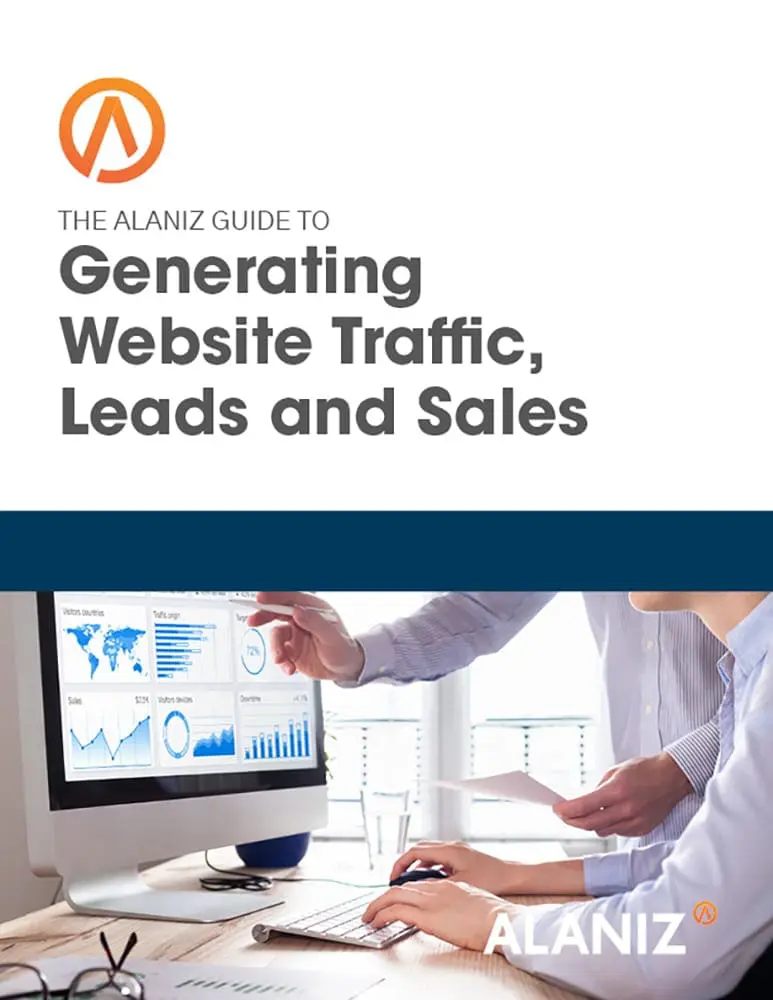 “I’m following SEO best practices.”
“I’m following SEO best practices.”
“I blog a few times a month.”
“I’ve gotten the company 500 new followers on Twitter.”
“I feel like I’m doing everything right, but I don’t seem to be gaining any new customers.”
Does any of this sound familiar? We speak to many marketers and CEOs who feel that although they are putting time and energy into their inbound marketing, they just aren’t seeing results.
What we’ve discovered from our discussions with these marketers and CEOs is that they are indeed doing a few of the components needed for successful inbound marketing, but they are lacking one key factor: a solid strategy.
What is Strategy?
First, let’s identify what strategy actually is.
The business dictionary defines strategy as:
Although it sounds complicated, it doesn’t have to be. In its simplest form, a strategy is a worthy goal that you want your B2B to achieve.
Note: No matter what your inbound marketing goal is, you can use these steps to create a successful gameplan.
Step 1: Setting Goals
The first step to creating an inbound marketing strategy is to define your business goals. At Sensible Marketing, we use the SMART goal method. SMART is an acronym for:
- Specific
- Measurable
- Attainable
- Relevant
- Timely
By using the SMART method, you can discover where you are in terms of your goal and where you want to go.
Effective Buyer Personas
Once you know the goal you want to achieve it’s time to gain a deeper understanding of your target audience. Every piece of content you create to achieve your goal will be geared towards driving your buyer personas to your website and down the sales funnel. Buyer persona research should include
- pain points,
- challenges,
- solutions,
- how they make buying decisions,
- and personal – as well as company information.
Research the competition
Understanding your competition is also an important factor when creating your goal and strategy. You should research organizations that are equal to where you are now, as well as larger organizations, in order to show you where you can and should go. By researching both equal and larger organizations, you can pinpoint your specialty and see where the holes are in your industry that can be filled.
Step 2: Getting Found
Keyword Research
Now that you know who are target customers are, it’s time to discover how these people are searching for your content. You can do this through keyword research. There are numerous free and paid sites that can help you discover the best keywords for your industry. Don’t forget to add in long-tail keywords. These very targeted keyword phrases contain 3 or more words. Although they tend to draw less traffic for your website, the traffic they do bring in is of higher quality, which leads to more conversions than normal keywords.
Once you have your keywords, you can use them in your blog posts, landing pages, web pages, and even social media to enhance the ranking of each post in the search engine results. This is not a set-it and forget-it list. Keywords should be analyzed regularly in order to find what is really working and what isn’t.
Onsite SEO
This consists of all the factors on a website page that influence search engine ranking. In order to get found for the keywords that are chosen in your keyword strategy, it’s important to optimize every page that is created on your website. All pages should include the appropriate keyword within the content, page properties, and the image tags. Performing onsite SEO for all current and future pages that you build out for your website is very important.
Blog Writing, and Posting
Blogging, done right, is the life-blood of bringing new visitors to your website. The key to successful blogging is to create relevant content around your buyer personas pain points and main industry topics. Keeping up with blogging is high priority in getting your website found online; the more frequently you blog, the more visitors you will attract.
Editorial Calendar
Before beginning your blogging campaign, you and your team should come up with an editorial calendar that is focused around your specific buyer persona and relevant keywords. An effective calendar will show
- who is responsible for the blog writing,
- publish dates,
- blog titles,
- and, if possible – or necessary – links to research on the topic.
An editorial calendar will not only make it easier to schedule content and capitalize on upcoming product or service launches, but it will ultimately encourage discipline in the running and updating of any blog.
Pay-Per-Click
If you don’t want to wait for organic traffic to find its way to your website then a PPC campaign is a great way to put your message in front of an audience that is seeking your product or service. Through keyword research, strategic bidding, and a compelling advertisement, you can get the results you want. PPC is no longer limited to search engines, you can also run PPC campaigns on various social media platforms.
Social Media
There’s no denying that social media has become a vital platform for sharing your content and engaging with your customers and potential customers. If you are a B2B, make sure that you are taking full advantage of LinkedIn to gain new customers and connections.
Step 3: Getting Leads
Premium Content Production
You have your goals, your buyer personas, and know where and how you want to publish; now it’s time to create relevant, engaging content that will convert visitors to leads on your website. Specifically, premium content, which is an offer that contains unique informational value to your target audience. Visitors are willing to fill out forms with their contact information in order to gain access to your premium content. Examples of premium content are eBooks, Webinars, Whitepapers, Case Studies, etc.
Landing Page Design
Landing pages are where your premium content lives. By clicking on a CTA or link in an email or blog, your potential customers will “land” on a page where you can capture their information and create new leads for your sales team. Optimizing your landing page will help you attract new leads.
Call-to-Action Creation
A call-to-action or CTA is what your potential customers will click on to get to your landing page. Following CTA best practices, your visitors will be compelled to click. To increase lead generation, you can design A/B CTA test groups and position them on various pages throughout your website, blogs, and social media.
Step 4: Acquiring Customers
Alignment of Sales and Marketing
Utilizing CRM integration allows you to provide your sales team with information that will make them better equipped for sales calls. With CRM systems, you can track every action a lead takes on your website, your email marketing, and on social media. This kind of information puts your sales team one step ahead on a sales call. They will be able to prepare themselves for the type of product or service the lead is interested in and build on the trust the lead has already established with your business.
Follow the Buyer’s Journey
Understanding your buyer’s journey is also an important key to moving your customers down the sales funnel. HubSpot defines the buyer’s journey as the active research process potential customers go through leading up to a purchase. In simpler terms, what questions, problems or opportunities do your potential customers have that you could possibly solve? The content you create should target the problems your particular personas are experiencing. But there are three very important lifecycle stages to consider in the journey:
- Awareness
- Consideration
- Decision
The buyer’s journey will influence your premium offers, forms used, and help you to segment leads.
Lead Nurturing
The best way to move a lead through a sales funnel is to launch lead nurturing campaigns. You can do this with a workflow, which allows you to trigger a follow-up email or a series of emails based on the action that a lead may take. This helps nurture and educate leads so they are prompted to take next steps and prepared before they even talk to a sales person.
Closing the Loop
“Closing the loop” in marketing just means that sales teams report to your marketing team about what happened to the leads that they received. This information helps you understand their best and worst lead sources. Typically, this involves connecting your marketing analytics software with your customer relationship management (CRM) software. With closed-loop reporting, marketers are then able to plan more strategically for the future by focusing on their best lead sources – those with the best conversion rate to customer.
Step 5: Delighting Customers
If you goal was to gain 50 new clients and you did so by following the steps above, congratulations. But that isn’t where this journey ends. Smart marketers understand that turning a customer into a promoter is imperative for your business. After all, the best advocates for your products or services are those that have experience with them. Options for delighting your current customers can include
- implementing referral programs,
- continued customer education pieces,
- and segmenting customer newsletters in order to keep your customers coming back for more.
Step 6. Analyze it
You should never end any inbound marketing campaign without analyzing the success or challenges of that campaign. Some of the metrics to measure the performance of include
- Landing pages
- CTA clicks
- Emails
- Blog posts
- Social Media
- PPC
- Keywords
Setting up your strategy the right way might take a little bit of time, but in the end, it’s worth it and will produce the type of results that turn into leads and customers for your marketing and sales teams!




